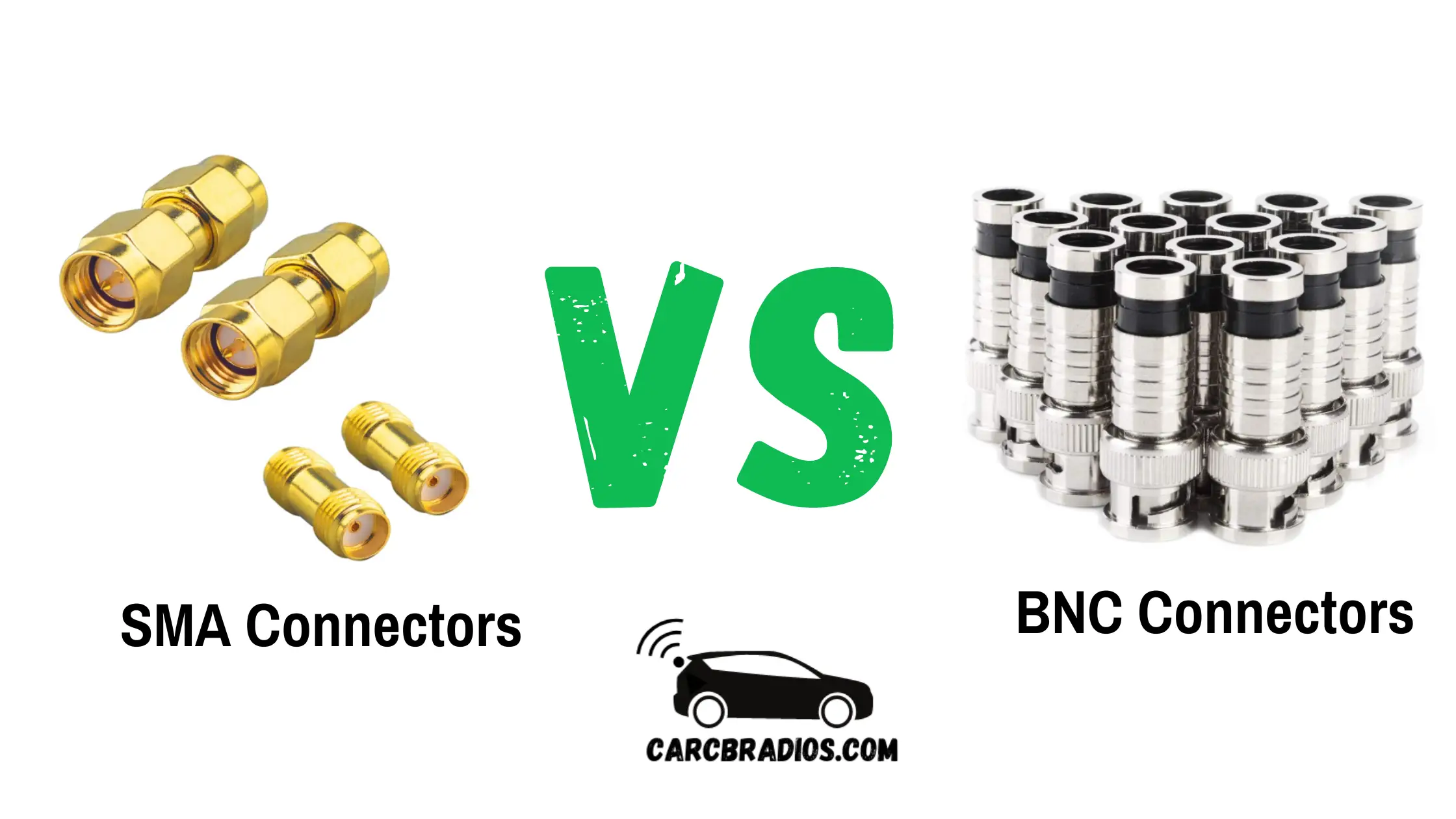By: Jeremy Neisser
When it comes to connecting electronic devices, there are many different types of connectors available. Two of the most commonly used connectors are SMA and BNC. SMA connectors are typically used for high-frequency applications, while BNC connectors are more commonly used for lower frequency applications. In this article, I will compare SMA and BNC connectors to help you understand the differences between the two.
SMA connectors, also known as SubMiniature version A connectors, are commonly used in applications that require high-frequency signals. These connectors are designed to work with coaxial cables and are often used in RF applications such as wireless communication, GPS, and satellite systems. BNC connectors, on the other hand, are commonly used in applications that require lower frequency signals, such as CCTV, audio, and video systems.
When comparing SMA and BNC connectors, there are several factors to consider, including frequency range, impedance, and durability. SMA connectors typically have a higher frequency range than BNC connectors, making them more suitable for high-frequency applications.
However, BNC connectors are generally more durable than SMA connectors, making them a better choice for applications where the connector may be subjected to frequent wear and tear.

SMA vs BNC Connectors Key Takeaways
SMA connectors are typically used for high-frequency applications while BNC connectors are more commonly used for lower frequency applications.
SMA connectors have a higher frequency range than BNC connectors but BNC connectors are generally more durable.
When choosing between SMA and BNC connectors, it's important to consider the specific requirements of your application.
SMA Connectors
History of SMA Connectors
SMA (SubMiniature version A) connectors were first developed in the 1960s by Bendix Corporation. They were originally designed for military applications, particularly in radio frequency (RF) communications. SMA connectors quickly became popular due to their compact size, high durability, and excellent electrical performance.
Design and Functionality
SMA connectors are cylindrical in shape and have a threaded coupling mechanism. They have a 50 ohm impedance and can be used up to 18 GHz. SMA connectors are available in both male and female versions. The male connector has a center pin that plugs into the female connector, which has a receptacle for the center pin. The threaded coupling mechanism ensures a secure and reliable connection.
SMA connectors are made of high-quality materials such as brass, stainless steel, and gold plating. The gold plating helps to prevent corrosion and ensures a low contact resistance. SMA connectors are also designed to be compatible with a variety of coaxial cables, including RG-58, RG-174, and RG-316.
Applications of SMA Connectors
SMA connectors are widely used in a variety of applications, including:
RF communications
Test and measurement equipment
Antennas
Microwave components
GPS systems
Wi-Fi and Bluetooth devices
SMA connectors are particularly useful in applications where space is limited, and a high-performance RF connection is required. They are also highly suitable for high-frequency applications due to their excellent electrical performance.
Overall, SMA connectors are a reliable and versatile choice for a wide range of applications requiring high-performance RF connections.
BNC Connectors
BNC (Bayonet Neill-Concelman) connectors are commonly used in electronic systems to transmit high-frequency signals. They are known for their ability to provide a secure connection while maintaining signal integrity. In this section, I will discuss the history, design, functionality, and applications of BNC connectors.
History of BNC Connectors
The BNC connector was first developed in the 1940s by Paul Neill and Carl Concelman at Bell Labs. It was designed to be a quick-connect/disconnect connector for coaxial cables. The connector gained popularity in the 1950s and 1960s in military and aerospace applications due to its reliable and secure connection. Today, BNC connectors are widely used in various applications, including telecommunications, video, and test equipment.
Design and Functionality
BNC connectors have a bayonet-style locking mechanism that allows for quick and secure connections. The connector has two mating parts: the male connector and the female connector. The male connector has a center pin that fits into the female connector's center hole, while the outer conductor of the male connector is secured to the female connector's outer conductor with a bayonet-style locking mechanism.
BNC connectors are designed to transmit high-frequency signals with minimal signal loss. The connector's impedance is typically 50 ohms or 75 ohms, depending on the application. The connector's design also allows for easy termination of coaxial cables, making it a popular choice for test equipment and other applications where cables need to be quickly swapped out.
Applications of BNC Connectors
BNC connectors are commonly used in video applications, such as CCTV cameras, where they provide a secure and reliable connection. They are also used in test equipment, such as oscilloscopes and signal generators, where they allow for easy swapping of cables. BNC connectors are also used in telecommunications equipment, such as routers and switches, to transmit high-frequency signals.
In conclusion, BNC connectors are widely used in various applications due to their reliable and secure connection. Their bayonet-style locking mechanism allows for quick and easy connections, and their design ensures minimal signal loss.
Comparing SMA and BNC
Physical Differences
When comparing SMA and BNC connectors, the first noticeable difference is their physical appearance. SMA connectors are smaller and have a threaded coupling mechanism, while BNC connectors are larger and have a bayonet-style coupling mechanism. The table below summarizes some of the physical differences between the two connectors:
SMA | BNC | |
Size | Smaller | Larger |
Coupling Mechanism | Threaded | Bayonet |
Frequency Range | Up to 18 GHz | Up to 4 GHz |
Impedance | 50 ohms | 75 ohms |
Performance Differences
In terms of performance, SMA connectors generally offer better electrical performance than BNC connectors. SMA connectors have a lower insertion loss and better return loss than BNC connectors. However, BNC connectors have a wider frequency range than SMA connectors. The table below summarizes some of the performance differences between the two connectors:
SMA | BNC | |
Insertion Loss | Low | High |
Return Loss | High | Low |
Frequency Range | Up to 18 GHz | Up to 4 GHz |
Impedance | 50 ohms | 75 ohms |
Use Case Differences
SMA and BNC connectors are used in different applications. SMA connectors are commonly used in high-frequency applications, such as in microwave systems, test and measurement equipment, and aerospace and defense applications. BNC connectors are commonly used in video and audio applications, such as in CCTV systems, broadcast equipment, and audio equipment. The table below summarizes some of the use case differences between the two connectors:
SMA | BNC | |
Applications | High-frequency | Video and audio |
Compatibility | Limited | Widely used |
Availability | Limited | Widely available |
Cost | Expensive | Inexpensive |
In conclusion, SMA and BNC connectors have their own strengths and weaknesses. SMA connectors offer better electrical performance and are commonly used in high-frequency applications, while BNC connectors have a wider frequency range and are commonly used in video and audio applications. The choice between SMA and BNC connectors depends on the specific application requirements.
Conclusion
In conclusion, both SMA and BNC connectors have their advantages and disadvantages.
SMA connectors are more commonly used in high-frequency applications due to their superior performance at higher frequencies. They are also more secure and less likely to accidentally disconnect. However, SMA connectors are more expensive and less commonly used in consumer electronics.
BNC connectors, on the other hand, are more commonly used in consumer electronics and are less expensive than SMA connectors. They are easier to install and remove, making them more convenient for applications that require frequent changes. However, BNC connectors are not as secure as SMA connectors and may accidentally disconnect more easily.
Ultimately, the choice between SMA and BNC connectors depends on the specific application and the user's needs. It is important to consider factors such as frequency range, cost, convenience, and security when selecting a connector.
Frequently Asked Questions
What is the difference between BNC and SMA connectors?
BNC and SMA connectors are both types of coaxial connectors used for RF applications. The main difference between them is the way they connect to the cable. BNC connectors have a bayonet-style locking mechanism, while SMA connectors have a threaded coupling mechanism. Additionally, BNC connectors are generally larger and can handle higher power levels than SMA connectors.
Which is better SMA or BNC?
The choice between SMA and BNC connectors depends on the specific application. SMA connectors are smaller and more commonly used in high-frequency applications, while BNC connectors are larger and can handle higher power levels. In general, SMA connectors are better suited for applications that require a higher frequency range, while BNC connectors are better suited for applications that require high power handling.
What is the bandwidth of BNC vs SMA?
The bandwidth of BNC and SMA connectors depends on the specific connector and cable used. In general, SMA connectors have a higher frequency range than BNC connectors, with a range of up to 18 GHz. BNC connectors typically have a frequency range of up to 4 GHz.
Is SMA and coax the same?
SMA connectors are a type of coaxial connector, which means they are designed to connect coaxial cables. However, not all coaxial connectors are SMA connectors. There are many different types of coaxial connectors, each with its own unique design and specifications.
Can I use a SMA to BNC adapter?
Yes, it is possible to use a SMA to BNC adapter to connect SMA and BNC connectors. However, it is important to note that using an adapter can introduce additional losses and affect the performance of the system.
What are the advantages of using a BNC connector?
BNC connectors have several advantages over other types of coaxial connectors. They are easy to connect and disconnect, thanks to their bayonet-style locking mechanism. They are also widely available and can handle high power levels. Additionally, BNC connectors are compatible with a wide range of coaxial cables, making them a versatile choice for many applications.

Hi & Welcome!
My name is Jeremy and I have been an avid car nut for many year. My first car was an 1987 Honda CRX. I put in my first Kenwood stereo, amp, 2 10" JLs and a CB Radio in it and have been an avid user of CBs and car radios for years. I'll do my best to share my tips, information and thoughts to help you with whatever question you might have, ABOUT ME
After I graduated from High School, I worked 5 years are Radio Shack and 3 years at Circuit City answering questions and helping customers with various electronics questions.
